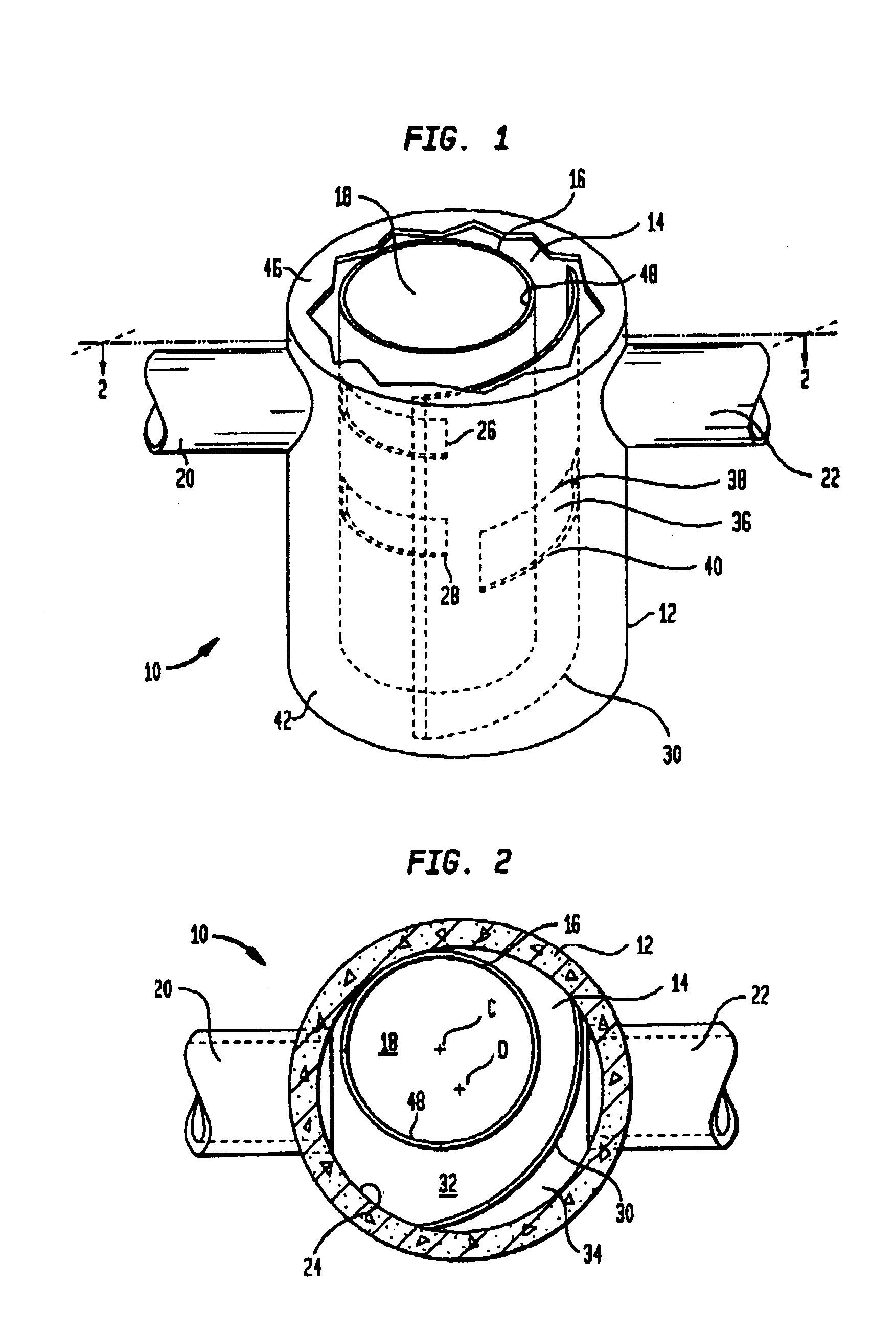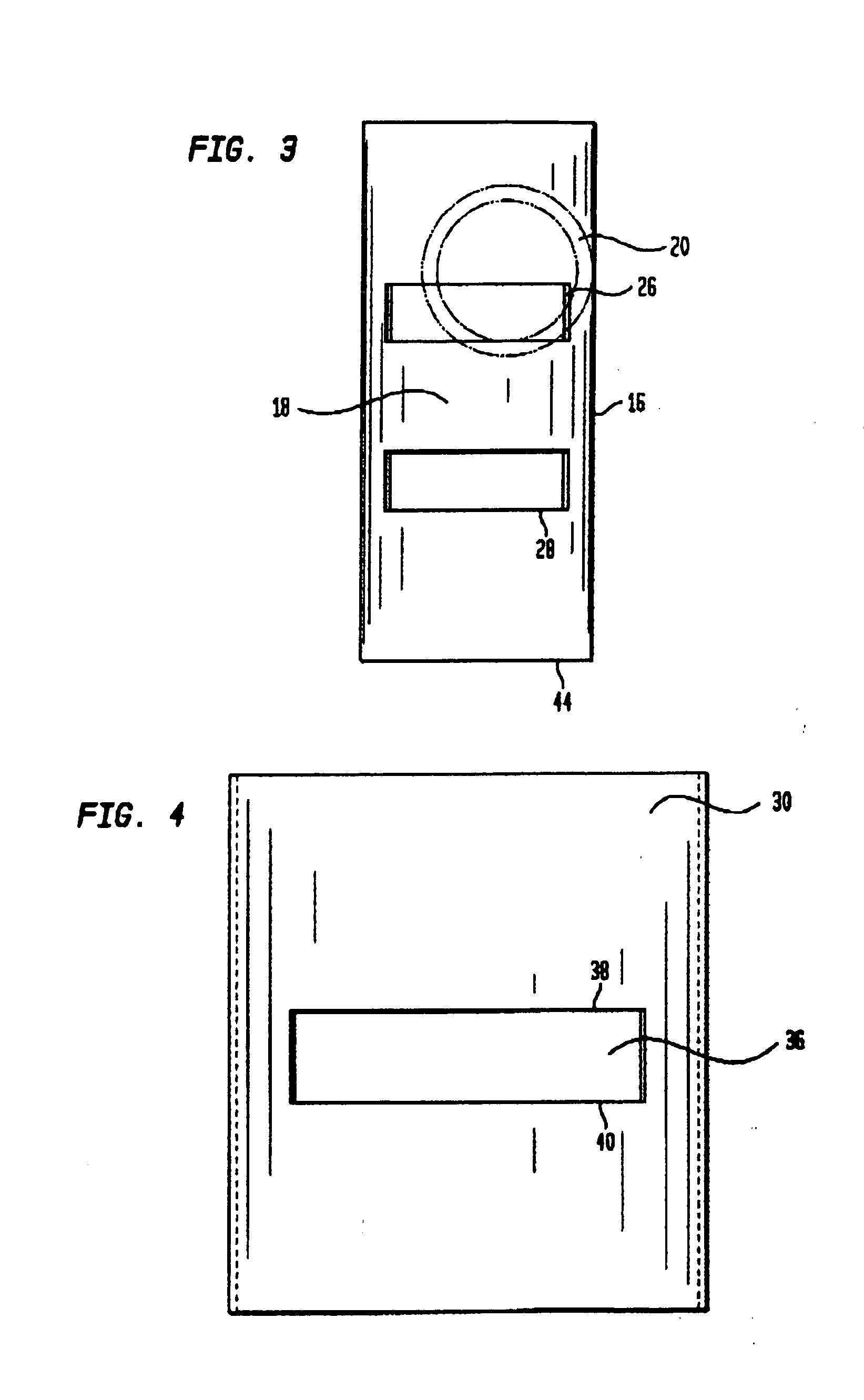Apparatus for trapping floating and non-floating particulate matter
a technology for floating and non-floating particulate matter, applied in separation processes, liquid displacement, filtration separation, etc., can solve the problems of insufficient to allow a worker to enter the device, reduce or eliminate the effectiveness of the stormwater treatment device, etc., and achieve cost-effective and efficient effects
- Summary
- Abstract
- Description
- Claims
- Application Information
AI Technical Summary
Benefits of technology
Problems solved by technology
Method used
Image
Examples
Embodiment Construction
[0025] Referring now to FIGS. 1 and 2, there is shown a separation tank 10 constructed in accordance with the present invention. The separation tank 10 may be constructed of an outer chamber wall 12 and forms an outer chamber 14 and, likewise, there is an inner chamber wall 16 forming an inner chamber 18. In both cases, the outer chamber and inner chamber walls 12, 16 may be cylindrical walls and the outer chamber wall 12 and inner chamber wall 16 can be constructed of a pre-cast concrete, fiberglass, plastic steel or similar types of material, it not being essential to the invention as to the particular material.
[0026] An inlet 20 is formed in the outer chamber wall 12 that is adapted to receive the flowing water to be treated. As will be seen the vertical location of the inlet 20 on the outer chamber wall 12 is significant and is a predetermined vertical location. The inlet 20 may be constructed with any piping materials commonly known in the art, e.g., concrete, aluminum, steel,...
PUM
| Property | Measurement | Unit |
|---|---|---|
| diameter | aaaaa | aaaaa |
| height | aaaaa | aaaaa |
| diameter | aaaaa | aaaaa |
Abstract
Description
Claims
Application Information
 Login to View More
Login to View More - R&D
- Intellectual Property
- Life Sciences
- Materials
- Tech Scout
- Unparalleled Data Quality
- Higher Quality Content
- 60% Fewer Hallucinations
Browse by: Latest US Patents, China's latest patents, Technical Efficacy Thesaurus, Application Domain, Technology Topic, Popular Technical Reports.
© 2025 PatSnap. All rights reserved.Legal|Privacy policy|Modern Slavery Act Transparency Statement|Sitemap|About US| Contact US: help@patsnap.com



